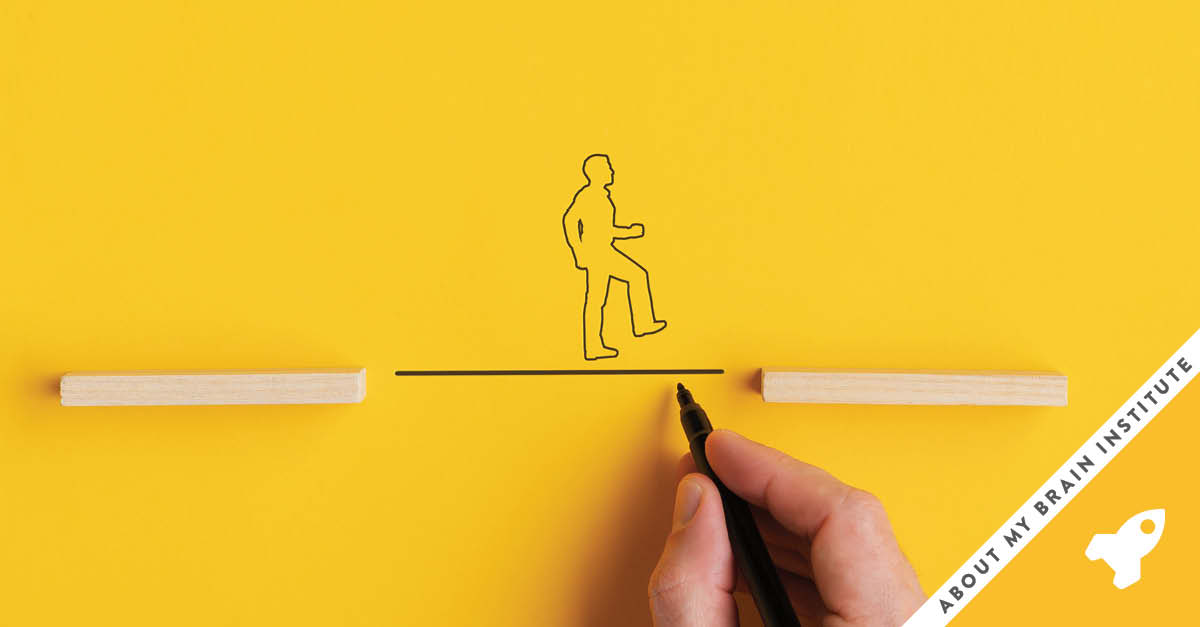Strategy is not a solo sport! Regardless of how creative, smart and savvy you may be, in this day and age, you can not transform a team, a business unit, an organisation without the brainpower and commitment of others! Collaboration is a critical leadership competency for the 21st century.
Created by Silvia Damiano the  that consists of 4 key competencies with 16 underpinning pillars. The model is rather different from other leadership competency approaches because informed by contemporary neuroscience, it takes account of the brain and body processes that support effective leadership practices critical for the 21st Century.
that consists of 4 key competencies with 16 underpinning pillars. The model is rather different from other leadership competency approaches because informed by contemporary neuroscience, it takes account of the brain and body processes that support effective leadership practices critical for the 21st Century.
In this article we will talk about Collaboration which refers to:
The attainment of a common goal through the effort of a combined body of people.
We at Mantle would argue that Collaboration is not simply a ‘nice to have’ organisational philosophy. It’s a critical leadership issue and an essential ingredient for organisational survival and success. If you consider any pressing challenge that leaders and organisations face today, the chances are that it cuts across vertical, horizontal, stakeholder, demographic and geographic boundaries.
Collective problems, by definition, need collaborative solutions supported by collaborative leaders. And yet the evidence shows that we are struggling to foster productive collaboration in our workplaces with resulting enormous collateral and
opportunity costs.
Today’s workplace is being transformed by social, political and technological drivers meaning that information and communications can flow from any and all directions. Leaders need to rely more than ever on the intelligence and resourcefulness of their staff. They need to know how to work in all directions and with all people—regardless of occupation, level, location, ancestry, nationality or religion.
According to Gensler’s 2013 US Workplace Survey (WPS), the most effective, productive workplaces are those that balance focus and collaboration, providing employees with space to work intensely on individual tasks and to gather with colleagues to brainstorm, complete group work or just enjoy a little social interaction.
Evan Rosen, the author of The Culture of Collaboration, defines collaboration as:
Working together to create value while sharing virtual or physical space.
According to him, removing command and-control structures allows collaboration to flourish. Google has a reputation for data-based decision-making and so it should be no surprise that the organisation would measure what makes an effective Google manager. What is interesting is that, although technical skills do rate in the top eight behaviours or competencies, five of the top six relate to the relationship between the manager and their team—being a good coach, empowering the team, helping with team member development, being a good communicator and expressing an interest in employee’s success and wellbeing.
It could be that today’s work challenges may be too complex and volatile for individual leaders to get traction. Leadership effectiveness in the future may be determined more by the quality of leadership collaboration.
A recent study of senior executives of international firms published by Korn-Ferry, the world’s largest executive search firm, and The Economist resoundingly confirms the theory that tomorrow’s organisations will be managed by teams of leaders. Asked who will have the most influence on their global organisations in the next ten years, 61 percent responded ‘teams of leaders’; 14 percent said ‘one leader.’
The Art Of Collaboration
When collaboration is working well we:
- Are tolerant and accepting of others’ views and perspectives
- Aim to achieve rather than compete
- Believe that a good team can accomplish more than individuals
- Know how to engage others
- Speak with passion and conviction
- Like to develop and praise others
- Are caring and courageous
- Listen and ask meaningful questions
- We articulate our thoughts with clarity
When collaboration is not working well we:
- Are self-centred
- Are reluctant to provide help to others
- Are fearful of losing
- Prefer working in isolation
- Are competitive
- May have a sense of superiority
- Have trouble letting go or delegating
- Can be rude, harsh and disrespectful
- Don’t know how to deal with conflict.
We have to recognise a new paradigm—not great leaders alone, but great leaders who exist in a fertile relationship with a great group. In these creative alliances, the leader and the team are able to achieve something together that neither could achieve alone.
Developing Collaboration In Leaders
Collaboration and high performing teams go together—where the team members are focused on achieving great team outcomes and also supporting the individual development of team members.
Another part of the problem, we believe, is that we often don’t have a clear definition and context for collaboration. Often organisations mistake interactions such as coordination (“I’m handing this over to you”) or cooperation (“I’m helping you out”) and communication (“I’m keeping you up to date”) with true collaboration.
Productive collaboration is not about endless meetings, but opportunities for people to come together to work on something that is value building. We think it is important that we differentiate collaboration from other interactions that people have with colleagues in a work setting so we can set about fostering the conditions that lead to greater collaboration. Collaboration is about deploying the best collective efforts of others in a focused manner and to our mind is at the heart of strategy, culture and change flexibility.
The Art Of Collective Thinking
Too often timely decision making (good or bad) trumps space for collaboration. The "decisive successful leader" thinks deeply and broadly and provides a convincing case that sells the idea to the key stakeholders. It is too often a win:lose game and most of us would probably prefer not to be challenged on the outcome of our thinking and have to go back to the drawing board.
Thankfully there are signs of change. Newer iterations of TQM and Kaizan approaches such as e.g. Agile and Lean methodologies are taking more collaborative and design thinking approaches that seek to harness the best collective thinking in and outside of the room.
It is a very different leader mindset to start a team meeting with a well-formed question instead of an answer, and then artfully facilitate so that the best collective thinking surfaces from the group.
James Surowiecki’s "The Wisdom of Crowds" expounds on the power of this thinking that leads to a higher form of solution than any of us could have reached by ourselves. We are used to coming to a meeting with a viewpoint, and then debating it if necessary to prove that we are the smartest person in the room. If our idea loses, we lose face and our survival brain is triggered.
We have to learn to collaborate, to hash out ideas with our colleagues keeping the higher purpose in mind. According to Silvia Damiano of the About my Brain Institute, we can develop collaboration in leaders through strengthening four key areas: inspiration, communication, generosity and courage.
Inspiration
Many (groups of) individuals have a vague notion of the vision that they are working towards; however, they don’t have an understanding of the collective work that they have to do together that not one of them could do on their own. A collective visualisation of the future guides direction and provides the scaffolding on which to have open conversations that can lead to new thinking.
This exploration of new ideas without being tied into right or wrong—in an environment that encourages, laughter, freedom and creativity—enhances dopamine levels which, in turn, drives greater productivity and outcomes. Furthermore, this setting of trust triggers the release of oxytocin, which further supports inspiration. Seventy-seven percent of people surveyed by AMBi agree that inspiration is not taken seriously in most workplaces, while 97 percent think that inspiration can mobilise people into action more than a command and control approach.
Communication
There is no collaboration without artful dialogue. In the Neurochemistry of Positive Conversations, Judith and Richard Glaser differentiate positive and negative interactions (see table). When we are ‘present’ with each other, new ideas can form in the moment without the guilt of the past or anxiety of the future. We can improve our ability to be in direct experience through training and practise.
Generosity
We have a tendency to love ideas that help others as long as they do not impinge on our own backyard. Society has instilled a deep sense of competitiveness in us. In many organisations it is about the survival of the fittest.
When we treat each other in a different, more generous way, we think beyond ourselves to find a win-win solution. Neuroscience is now showing us what we have long known to be true: service to others calms us, connects us and allows our brains to be at optimal fitness. One of the five ways to wellbeing of the Mental Health Foundation of New Zealand is to give.
Courage
In order to collaborate well we have to overcome the easily triggered threat response of our amygdala. The challenge of the 21st century brain is to recondition our amygdala so that it only alerts us when there is a real danger to ourselves. With constant daily practise and awareness, science is showing us that brain’s can reach a higher state of calmness and alertness that allows us to be more precise with the decision of what constitutes a life or death response.
As we collaborate more effectively we would expect to see:
- An expanded breadth and depth of thought topics explored by organisations;
- Increasing cross referral rates between divisions, businesses and parts of the supply chain;
- Greater flow of talent;
- Higher quality decisions;
- Greater impact on the social, economic, educational, health, environmental and cultural fabric of community.
How Can Leaders Support Greater Collaboration?
- Invest in signature relationship practices. There is a subtle yet important difference between collaboration in pairs versus collaboration that happens in groups. In the instance that two colleagues work together to develop an idea, the ensuing collaboration can happen pretty much anywhere—in a hallway, café, at a desk or in any number of other spaces specifically designed for collaboration.
When more people are involved, the spaces in which they collaborate need to support the process in order to be effective. Equipment and tools, such as technology and communication devices, not only facilitate collaborative spaces, but can also set the tone of the type of collaboration that happens there. Whether it’s real space, virtual spaces online, high-tech interactive whiteboards, video conferencing or the more low-tech flipchart easel, consideration of how the spaces can be used to facilitate collaborative work, as well as inspire, is all-important. - Model collaborative behaviour. Where the senior executives demonstrate highly collaborative behaviour themselves, teams collaborate well. Mentoring and coaching can help people build the networks they need to work across corporate boundaries. Service departments that work across the business have a major impact on team collaboration.
- Support a strong sense of community. This allows people to feel more comfortable reaching out to others and more likely to share knowledge. Cooperation increases when individual roles are defined yet the team is given latitude on how to achieve the task. Create opportunities for empathy, from job shadowing to joint team interventions that improve mutual understanding and support cooperation and collaboration looking for value.
- Select new leaders who are both task- and relationship- orientated. The debate has traditionally focused on whether a task or a relationship orientation creates better leadership, but in fact both are key to successfully leading a tea.
Summary
Regardless of how creative, smart and savvy a leader may be, he or she can’t transform an organisation, a department or a team without the brainpower and commitment of others. Success dictates that the individuals affected by change be involved in the change from the very beginning.
Many organisations are trying to share the cumulative wisdom of a workforce by investing millions of dollars in portals, software, and intranets. But collaboration is more than the technology that supports it, and even more than a business strategy aimed at optimising an organisation’s experience and expertise.
Collaboration is, first and foremost, a change in mindset and behaviour of people throughout an organisation. Successful collaboration is a critical human and leadership issue.
- i4 Neuroleader (353)
- Leadership & Culture (336)
- Brain Health & Wellbeing (206)
- Innovation (97)
- Performance (85)
- Our News (79)
- Collaboration (68)
- Agility (53)
- Practitioner Stories (44)
- In The Press (36)
- Make Me A Leader (33)
- Balance (31)
- Integration (30)
- Imagination (29)
- Awareness (23)
- Brain-Friendly Channel (22)
- Brain-Friendly Leadership (22)
- Communication (22)
- Curiosity (21)
- Inspiration (19)
- Intuition (19)
- Attitude (17)
- Courage (16)
- Adaptability (14)
- Case Studies (14)
- Drive (14)
- Generosity (13)
- Ethics (9)
- Mental Readiness (9)
- Influence (8)
- Retreat (8)
- Brain-Friendly Leadership (1)
- Oracle Cards (1)
- 1 November 2025 (2)
- 1 September 2025 (3)
- 1 August 2025 (5)
- 1 July 2025 (5)
- 1 June 2025 (2)
- 1 April 2025 (1)
- 1 March 2025 (8)
- 1 February 2025 (3)
- 1 September 2024 (4)
- 1 July 2024 (2)
- 1 June 2024 (6)
- 1 May 2024 (2)
- 1 April 2024 (3)
- 1 March 2024 (1)
- 1 November 2023 (1)
- 1 August 2023 (1)
- 1 July 2023 (2)
- 1 June 2023 (2)
- 1 May 2023 (4)
- 1 April 2023 (2)
- 1 March 2023 (7)
- 1 February 2023 (4)
- 1 January 2023 (1)
- 1 September 2022 (1)
- 1 May 2022 (3)
- 1 April 2022 (1)
- 1 March 2022 (5)
- 1 February 2022 (4)
- 1 January 2022 (4)
- 1 December 2021 (2)
- 1 November 2021 (4)
- 1 October 2021 (3)
- 1 September 2021 (6)
- 1 August 2021 (1)
- 1 April 2021 (1)
- 1 December 2020 (2)
- 1 November 2020 (1)
- 1 September 2020 (1)
- 1 August 2020 (1)
- 1 July 2020 (3)
- 1 June 2020 (4)
- 1 May 2020 (3)
- 1 April 2020 (4)
- 1 March 2020 (6)
- 1 February 2020 (4)
- 1 January 2020 (2)
- 1 December 2019 (3)
- 1 November 2019 (3)
- 1 October 2019 (5)
- 1 September 2019 (4)
- 1 August 2019 (4)
- 1 July 2019 (4)
- 1 June 2019 (5)
- 1 May 2019 (9)
- 1 April 2019 (9)
- 1 March 2019 (8)
- 1 February 2019 (7)
- 1 January 2019 (8)
- 1 December 2018 (5)
- 1 November 2018 (10)
- 1 October 2018 (16)
- 1 September 2018 (9)
- 1 August 2018 (10)
- 1 July 2018 (9)
- 1 June 2018 (8)
- 1 May 2018 (9)
- 1 April 2018 (9)
- 1 March 2018 (9)
- 1 February 2018 (8)
- 1 January 2018 (8)
- 1 December 2017 (6)
- 1 November 2017 (9)
- 1 October 2017 (9)
- 1 September 2017 (8)
- 1 August 2017 (10)
- 1 July 2017 (8)
- 1 June 2017 (8)
- 1 May 2017 (9)
- 1 April 2017 (8)
- 1 March 2017 (6)
- 1 January 2017 (3)
- 1 December 2016 (4)
- 1 November 2016 (5)
- 1 October 2016 (4)
- 1 September 2016 (2)
- 1 August 2016 (4)
- 1 July 2016 (4)
- 1 June 2016 (2)
- 1 May 2016 (3)
- 1 April 2016 (3)
- 1 March 2016 (7)
- 1 February 2016 (2)
- 1 January 2016 (5)
- 1 December 2015 (2)
- 1 November 2015 (2)
- 1 October 2015 (4)
- 1 September 2015 (2)
- 1 August 2015 (2)
- 1 July 2015 (1)
- 1 June 2015 (3)
- 1 May 2015 (4)
- 1 April 2015 (5)
- 1 March 2015 (3)
- 1 February 2015 (3)
- 1 January 2015 (3)
- 1 December 2014 (3)
- 1 November 2014 (3)
- 1 October 2014 (3)
- 1 September 2014 (5)
- 1 August 2014 (4)
- 1 July 2014 (5)
- 1 June 2014 (3)
- 1 May 2014 (1)
- 1 March 2014 (1)
- 1 December 2013 (2)
- 1 November 2013 (1)
- 1 July 2013 (1)
- 1 June 2013 (1)
- 1 May 2013 (3)
- 1 April 2013 (1)
- 1 March 2013 (2)
- 1 February 2013 (1)
- 1 January 2013 (2)
- 1 November 2012 (1)
- 1 October 2012 (1)
- 1 September 2012 (1)
- 1 August 2012 (2)
- 1 July 2012 (1)
- 1 June 2012 (1)
- 1 May 2012 (2)
- 1 April 2012 (1)
- 1 February 2012 (1)
- 1 January 2012 (1)
- 1 November 2011 (1)
- 1 October 2011 (3)
- 1 September 2011 (2)
- 1 July 2011 (1)
- 1 June 2011 (1)
- 1 May 2011 (1)
- 1 April 2011 (1)
- 1 March 2011 (1)
- 1 February 2011 (2)
- 1 January 2011 (4)
- 1 December 2010 (4)
- 1 November 2010 (3)
- 1 October 2010 (5)
- 1 September 2010 (4)
- 1 August 2010 (4)
- 1 July 2010 (3)
- 1 June 2010 (4)
- 1 May 2010 (7)
- 1 April 2010 (5)
Subscribe by email
You May Also Like
These Related Stories

4 Ways You Can Become a More Generous Leader

Having The Courage To Let Go Of Perfectionism



No Comments Yet
Let us know what you think